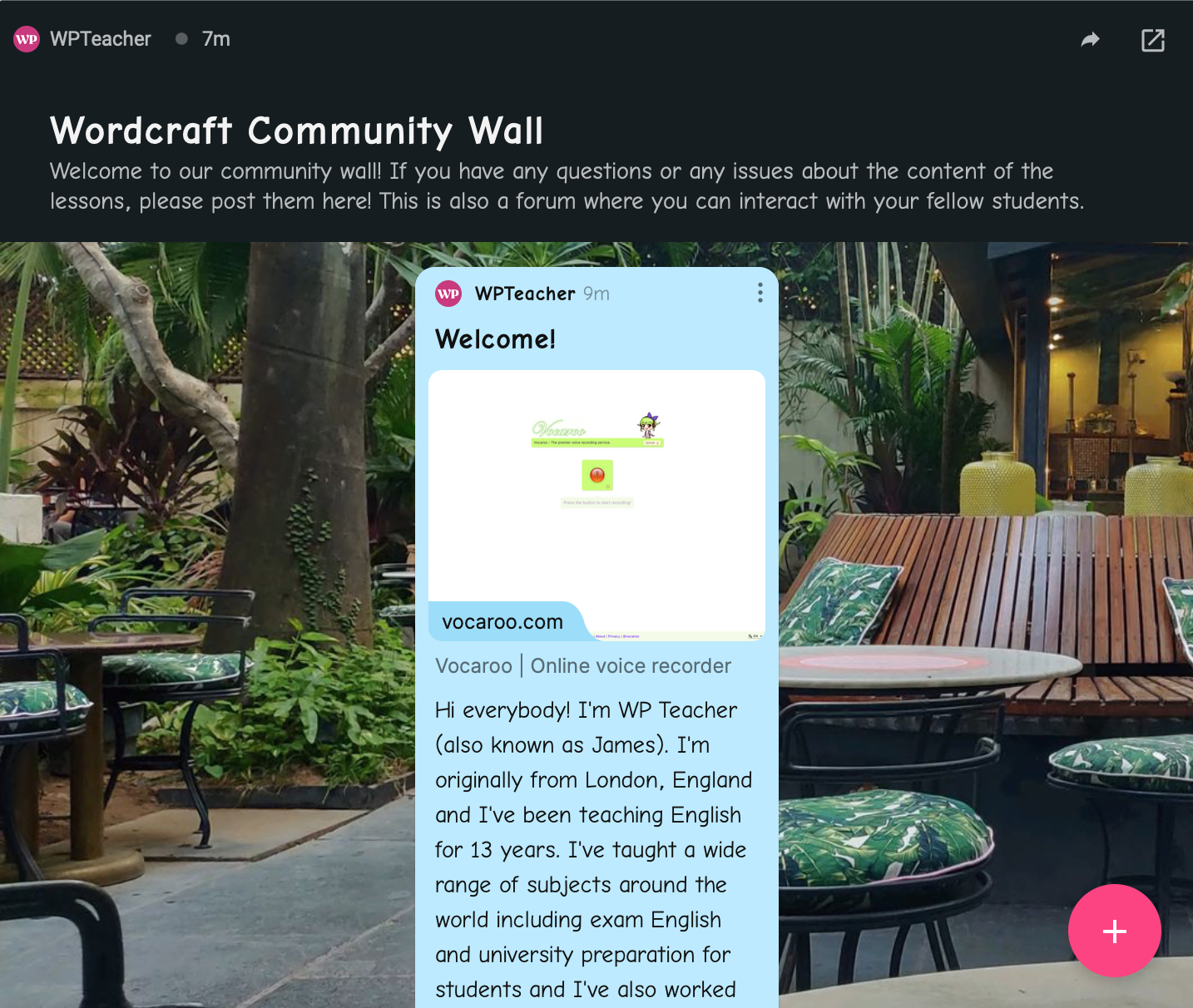Welcome to your online IELTS speaking course!
This course is going to provide you with the language you will need to succeed in the IELTS speaking exam.

Hi everyone! As mentioned in the tutorial video, this course is going to provide you with the language you will need to succeed in the IELTS speaking exam. You will also have the chance to produce this new language during the final interactive task in each lesson, which relates to a different part of the speaking exam as detailed in the 'course content' section below. If you haven't seen the course tutorial yet, please click on the hyperlink above. For information about the speaking test format itself, please click the link below. Please note that the format is the same for both the general training and academic tests. (You may need to right-click and open a new tab):

Course content
If you are comfortable with how the speaking exam works, let's quickly break down the focus of each lesson:
Lesson 1: Linking Words - Final Task: IELTS speaking part 2 - Topic: Describing a place where you would like to live in the future.
Lesson 2: Prepositions - Final Task: IELTS speaking part 3 - Topic: Social issues.
Lesson 3: Register - Final Task: IELTS speaking part 1 - Topic: Talking about your hometown.
Lesson 4: Pronunciation - Final Task: IELTS speaking part 2 - Topic: Describing a journey or event that didn't go as planned.
Lesson 5: Expressions - Final Task: IELTS speaking part 3 - Topic: Diet.
Lesson 6: Emphasis - Final Task: IELTS speaking part 1 - Topic: Sport.
Lesson 7: Gerunds & Infinitives - Final Task: IELTS speaking part 2 - Topic: Preparing a talk giving advice to foreigners who would like to visit your country.
Lesson 8: Word Formation - Final Task: IELTS speaking part 3 - Topic: Jobs.
Keeping a lexical notebook
During this course you will not only have access to videos and interactive tasks, but you will also be able to test yourself on the content of the video by downloading exercises from each lesson. To organise the new language that you will learn, you might want to take notes in a certain way. For example, when students learn a new word or phrase, they usually just write the meaning or a translation next to it.
In addition to the meaning though, it would be useful to write the form, pronunciation and collocations of the word or phrase. For example, lets look at the uncommon, formal word 'inclement'. Instead of:
inclement - unpleasantly cold or wet (+ translation).
You could write:
inclement (adj.) - unpleasantly cold or wet. (Collocation - weather).
Here you add the form of the word, which is an adjective. An adjective describes a noun, such as people, things or places (not everyone knows the meaning of these words!). For pronunciation, you could put a line under the syllable that needs to be stressed - in this case the second syllable: in-cle-ment. Finally, a collocation is a word or phrase that is commonly used with the word or phrase in question. For example, 'inclement' is mostly used to describe the noun 'weather'.
Organising language like this, especially adding collocations, is a big part of keeping an effective lexical notebook. After all, ‘learning more vocabulary is not just learning new words, it is often learning familiar words in new combinations’ (Woolard, 2000, p31). From: Lewis, M. (Ed.) (2000). Teaching Collocation: Further Developments in the Lexical Approach. Hove: Language Teaching Publications.
To help you with recording collocations, here's a link to the free collocation dictionary website (you may need to right-click the link to open it in a new tab):
It will provide you with words that 'collocate' or 'match' with the word you enter into the search bar. This is useful if you learn a new word or phrase and want to learn its collocates.
Finally, the pdf below from the British Council gives more examples of how to organise your notebook:
First task of the course! - The Community Wall
If you have just bought this course, you will now have access to the 'community wall'. This is a good chance to test your Padlet profile that you should have set up through the welcome email. As IELTS speaking part 1 usually starts with introductions, I'd like you to follow the link above and leave a recording or message, as I have done below, introducing yourself to your fellow course participants. I look forward to hearing from you!






